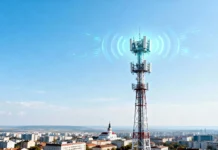Alert for Telecoms: Cybersecurity, AI, and Battle to Safeguard Connectivity
In this hyperconnected era, where telecommunications are the lifeblood of global communication, the stakes have never been higher to preserve connectivity. With digital transformation speeding up across sectors, the telecommunications industry is struggling with sophisticated challenges, from cybersecurity attacks to ethical uses of artificial intelligence (AI). The fight to ensure secure and resilient telecom networks is now a defining challenge for telecom operators, service providers, and governments globally.
This telecoms alarm for cybersecurity, AI, and fight to protect connectivity is a plea for vigilance as much as an urgent imperative to protect the digital infrastructure that underpins our lives. With cyber-attacks becoming ever more advanced and AI more deeply integrated into telecom operations, the sector needs to learn and evolve to remain ahead of bad actors and systemic weaknesses.
The Growing Cybersecurity Threats in Telecoms
Telecom is a high-priority target for cyberattacks with its role in enabling communication and data transfer worldwide. Cybercriminals are now no longer interested in just financial loot but wish to cause damage to critical infrastructure, compromise personal data, and impact national security. A report quoted by Telecom Lead points out that the telecom sector is one of the top three most targeted by hackers.
Among the most serious issues is the increasing prevalence of ransomware attacks. By encrypting essential information and demanding ransom for its release, cyberattackers have shown they can bring operations to a halt. In 2023, a leading European telecommunications operator saw its services disrupted for millions of subscribers after falling victim to a ransomware attack, highlighting the need for very strong cybersecurity measures.
The other critical challenge is the weakness of 5G networks. Although 5G is set to deliver higher speeds and more connectivity, it also presents new security threats. The distributed nature of the 5G network, combined with the emergence of IoT devices, provides more surface area for attackers to target. Moreover, the use of SDN and virtualization by 5G exposes it to software vulnerabilities and misconfigurations.
Insider threats also add to the security problems of telecom operators. Privileged employees with access to key systems are a major threat, either by negligence or design. In a business as sensitive as telecommunications, one compromise can have extensive implications, impacting millions of customers and potentially endangering national security.
The Role of AI in Telecom Cybersecurity
With cybersecurity threats becoming even more daunting, artificial intelligence has become an essential resource in the fight to secure connectivity. AI offers telecom operators sophisticated tools for threat identification, incident response, and network optimization, allowing them to maintain an edge over continuously developing threats.
Artificially intelligent cybersecurity tools are especially good at detecting and neutralizing threats in real time. By processing huge amounts of network data, AI algorithms can recognize patterns that would suggest a cyber-attack. For instance, AI-based systems are able to recognize abnormal patterns of data traffic that might denote a distributed denial-of-service (DDoS) attack, enabling operators to act immediately and reduce downtime.
Machine learning, one of the facets of AI, is integral to predictive cybersecurity. Machine learning algorithms can forecast possible vulnerabilities based on past data and suggest proactive steps for fixing them. This feature can be especially useful in securing 5G networks, whose dynamic architecture demands ongoing monitoring and quick adaptation.
AI is also revolutionizing the arena of incident response. Classic cyber incident response is usually slow and retrospective and tends to expose networks to extended attacks. AI-powered automation facilitates quick and effective responses by automating activity like isolating infected systems, blocking malicious IP addresses, and recovering impacted services.
Yet, the convergence of AI and cybersecurity has its issues. Adversarial attacks, in which hackers tamper with AI models to circumvent security controls, are growing more prevalent. On top of that, the ethical considerations of AI in cybersecurity, including data privacy and algorithmic bias, need to be addressed properly to be able to rely on and hold someone accountable.
Strategies to Fortify Telecom Networks
The telecom business needs to take a multi-faceted approach to deal with the cybersecurity problems it faces. This means using new technologies, following the rules, and working together with other companies in the same field.
One of the most important plans is to use zero-trust architecture (ZTA). In contrast to the older security models that depend on perimeters, ZTA presumes that threats would come from within and outside the network. By constantly authenticating and monitoring both users and devices, ZTA reduces the risk of unauthorized access and lateral movement on the network.
Regulatory frameworks are also key to bolstering telecom cybersecurity AI. Governments across the globe are implementing robust data protection and cybersecurity laws to guarantee that telecom operators implement best practices. For example, the European Union’s General Data Protection Regulation (GDPR) requires strong requirements for protecting personal data, and the U.S. Federal Communications Commission (FCC) has implemented guidelines for safeguarding critical telecom infrastructure.
Industry stakeholders must collaborate to develop a robust telecom ecosystem. Governments, technology companies, and telecom operators must collaborate to exchange threat intelligence, create standards, and facilitate coordinated responses to cyberattacks. The Telecom Infra Project (TIP) and the GSMA’s Fraud and Security Group are two examples of how working together may help solve problems that affect the whole industry.
Another important part of making telecom networks stronger is investing in the growth of the staff. As cyber threats get more complex, there is a growing need for cybersecurity experts. Telecom companies need to make training and upskilling their employees a top priority so that they have the skills they need to keep their networks safe and deal with new threats.
Balancing Connectivity and Security
The core mission of the telecom sector is to offer smooth connectivity, but not at the cost of security. Finding the right balance between connectivity and security is a fine task that needs to be planned with great care and executed carefully.
One of the hardest issues in obtaining this balance is the trade-off between security measures and convenience to the user. For instance, multi-factor authentication (MFA) is more secure but can be inconvenient for users by adding extra steps in accessing. To counteract this, telecom operators are using AI to create user-friendly security technologies that provide minimal friction while ensuring strong protection.
The coming together of leading connectivity and security also requires a change in thinking. Security should no longer be regarded as an independent function but must be integrated into all facets of telecom operations, including network planning through to service delivery. Having security integrated into all these aspects guarantees that security is not an add-on but a core element of the telecom ecosystem.
As the telecom sector keeps developing, the intersection of telecom cybersecurity AI will play a major role in forging its future. Through innovation and adopting proactive approaches, telecom operators will be able to secure connectivity while providing superior service to consumers.
Conclusion
The warning for telecom cybersecurity AI, and fight to protect connectivity is an apt reminder of the primordial importance of telecom operators’ role in keeping modern society’s digital lifelines alive. Cybersecurity and AI can no longer be considered niceties but are now integral pillars of telecom strategy, empowering the sector to ride through a growing complex threat landscape.
Though the challenges are daunting, the potential for innovation and resilience is equally powerful. By investing in cutting-edge technologies, embracing collaboration, and putting security first, the telecom industry can rise above its cybersecurity issues and come back even greater than before.
The battle to safeguard connectivity is not just about protecting infrastructure; it is about preserving trust, enabling progress, and ensuring that the digital revolution continues to benefit societies around the world. For telecom operators, the time to act is now, as the stakes could not be higher.




















